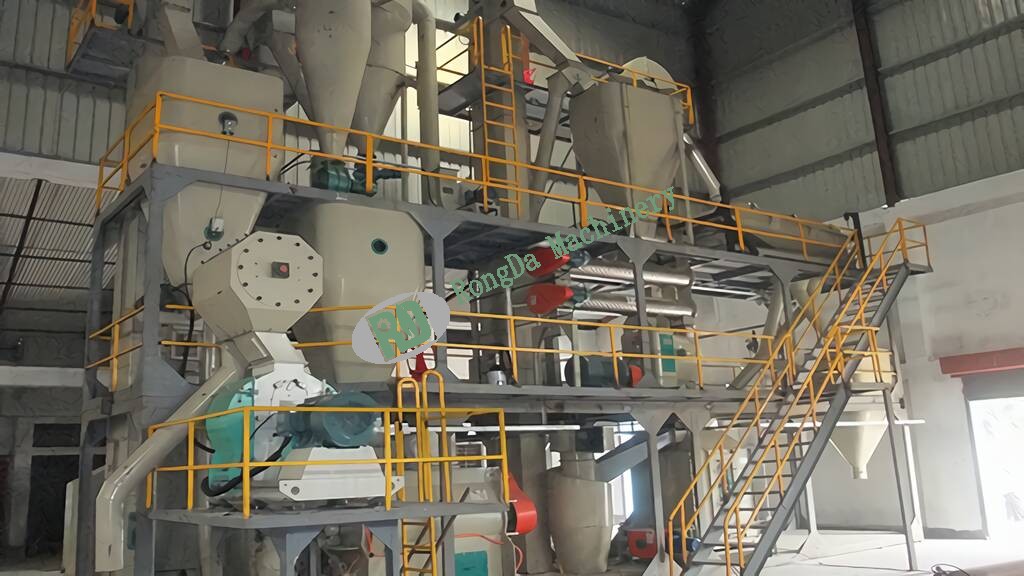Welcome to Rongda Machinery Co., Ltd
Toggle Navigation
A complete feed mill is a large facility dedicated to processing raw materials into high-quality animal feed. Feed mills play a vital role in the agricultural industry, providing livestock with nutrient-rich feed to ensure their health and productivity. With technological advancements and growing demands for sustainable animal husbandry, the concept of a feed mill continues to evolve.
Essentially, a feed mill is an industrial facility that transforms grains, cereals, and proteins into standardized animal feed to support agricultural production. Its primary purpose is to meet the growing demand for high-quality animal feed in the market while improving production efficiency, effectiveness, and environmental sustainability.

The production of animal feed begins with the processing of raw materials, which typically include:
Grains: Edible seeds like rice, millet, and sorghum are commonly used as base ingredients for feed.
Cereal Crops: Starch-rich crops such as corn and wheat are key components in feed production.
Proteins: Animal by-products like soybean meal, corn gluten, and wheat bran are often used as supplemental feed ingredients.
Fats and Oils: Glycerides extracted from fat-rich raw materials like sunflower oil and vegetable oils are used to enhance the nutritional value of the feed.
These raw materials are processed, mixed, and formulated into standardized feed to meet the nutritional requirements of different animals.
At the feed mill, the processing and transformation of raw materials involve several key stages to ensure the final product is suitable for animal consumption. These stages include:
Grinding: Raw materials are ground to break down larger particles and release enzymes that aid in digestion.
Mixing: Ground raw materials are blended to create a uniform mixture containing grains, proteins, fats, and fillers.
Drying: The mixture is dried to remove moisture, ensuring the feed has the proper dryness and stability.
Formulation: The final step involves adding specific nutritional ingredients such as vitamins, minerals, and probiotics to meet the dietary needs of animals.
Once the feed is produced, it is stored in clean, sanitary facilities to maintain its quality and prevent contamination. These storage facilities are typically equipped with temperature and humidity control systems to ensure the feed remains fresh and safe for long periods. The feed is then distributed to various farms and feed companies through a transportation system, where it is used to feed poultry, pigs, sheep, cows, and other animals.
In addition to producing high-quality animal feed, complete feed mills also focus on managing waste efficiently. The factory processes leftover materials, such as grinding residues, waste, and sludge, and transforms them into valuable by-products such as biogas, compost, and other materials. This not only reduces waste but also promotes sustainability by utilizing agricultural by-products.

A complete feed mill consists of several parts that work together to produce high-quality animal feed. The main components include:
Processing Equipment: Machines used for grinding, mixing, and drying raw materials.
Automation: Modern feed mills utilize automation technology to enhance production efficiency, precision, and consistency.
Data Management Systems: Advanced systems monitor and analyze production data to optimize processes and ensure industry standards are met.
Quality Control Facilities: These facilities ensure that the feed meets specific nutritional standards and safety requirements.
The source manufacturer of feed processing equipment, Rongda Machinery.